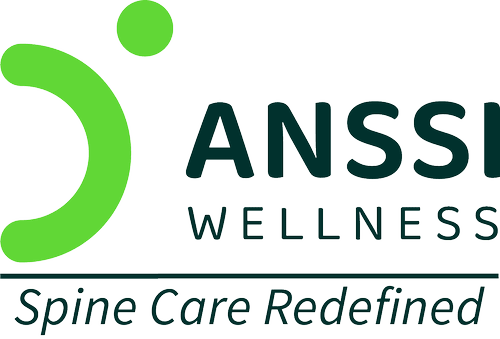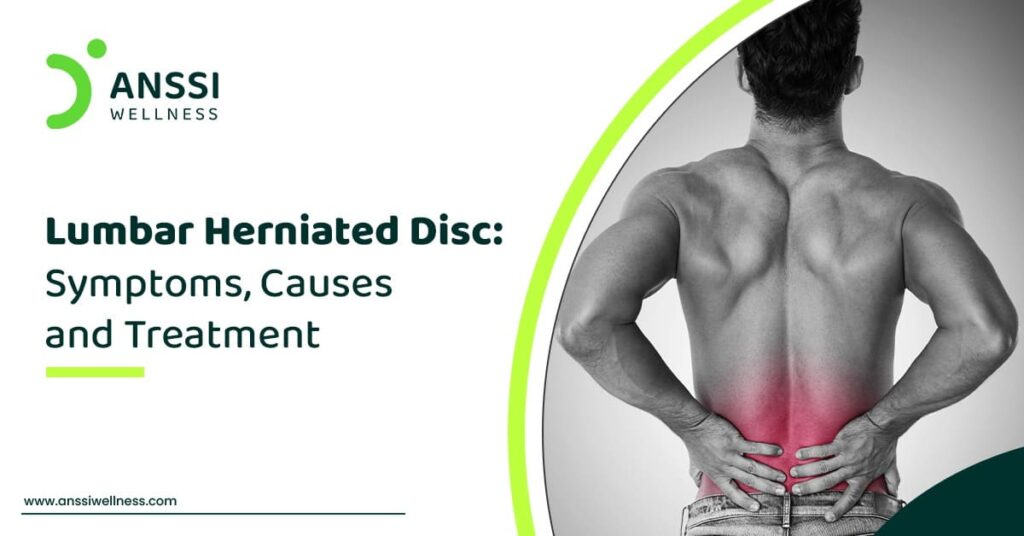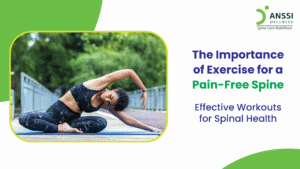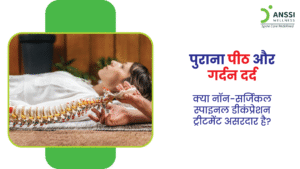Experiencing chronic pain in the lower back region? It could be due to a lumbar herniated disc!
Let’s engage in a detailed overview of lumbar herniated disc conditions, so you can know more about its symptoms, causes and treatment options.
What is a Lumbar Herniated Disc?
To begin with, the part of our spine in the lower back region is called the lumbar spine. When a spinal disc in the lumbar spine region becomes herniated with an abnormal protrusion or rupture, it’s termed a lumbar herniated disc. Lumbar herniated disc is quite a prevalent condition among the global population since the lower back area of the spine is the area where the weight of the entire torso is balanced.
What Are the Symptoms of a Lumbar Herniated Disc?
First, it’s important to note that around 90% of individuals with a lumbar herniated disc don’t experience any symptoms or pain even 6 weeks after the condition develops. However, people with a lumbar herniated disc experience excruciating pain in the lower back region due to the herniated disc pressing against a nearby nerve and inflaming it.
The following are the common symptoms of a lumbar herniated disc:
- Constant leg pain
- Radiating nerve pain in the back of the leg
- Numbness, weakness, tingling sensation in the leg, foot, toes
- Stiffness in the lower back area, accompanied by dull pain
- Pain experienced after sitting or standing for an extended period
- Pain felt after bending/hunching forward in the waist region
What Are the Causes of a Lumbar Herniated Disc?
Common risk factors that contribute to a lumbar herniated disc condition are:
- Having age between 35 – 50 years
- Constantly doing jobs involving heavy lifting or physical labour
- Increased likelihood of men developing a lumbar herniated disc than women
- Obesity
- Smoking which accelerates disc degeneration and hinders the healing process
- Having a family history of spinal disc wear and tear
Complications with Surgery
Spine surgery for a herniated disc or any other spinal condition is a very risky option with a lot of potential complications.
These complications comprise of:
- Bleeding
- Infection
- Nerve injury
- Adverse body reaction to anaesthesia
- Dural tear (tear of the sac surrounding the nerves)
- Hematoma (pool of largely clotted blood) leading to nerve compression
- Recurring disc herniation
- Need for another surgery
Non-Surgical Treatments for a Lumbar Herniated Disc
Opting for non-surgical treatments for spinal disc conditions is preferable for many patients because spine surgery involves a wide range of risks, potential side effects and complications.
Physical Therapy
Consulting a physiotherapist to learn strengthening exercises for the lower back region and abdominal muscles can help relieve pain caused by a lumbar herniated disc.
Holistic Therapies
These therapies generally focus on the body, mind and spirit to help support the healing process and overall health of a person.
Non-Surgical Spinal Decompression Treatment
The non-surgical spinal decompression treatment is an advanced form of treatment designed to treat the root cause of the condition. The treatment involves gentle stretching of the spine which relieves the pressure from spinal discs and compressed nerves. The negative pressure created as a result, allows the herniated part of the spinal disc to retract. This leads to an increased flow of water and nutrients towards the spinal discs which facilitates the healing process.
About ANSSI:
ANSSI Wellness focuses on improving the quality of life for patients suffering from spinal issues, aiming to provide relief where other conventional treatments have failed. Through advanced non-surgical spinal decompression treatment, ANSSI is committed to helping patients avoid surgery and recover in a safe, effective, and compassionate environment.
FAQs
Yes, in many cases, the bulging disc symptoms go away after a period of time.
MRI is the best diagnostic test to detect herniated and bulging discs.
Massage can provide short-term relief from chronic back pain caused by a bulging disc.



